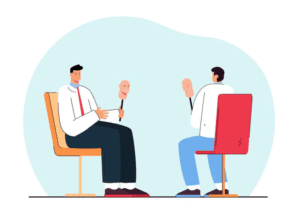Understanding the Nuances of Therapeutic Engagement
This article has been researched and written by Sara Caroppo. AI has not been used in producing this article.
It is a familiar scene in private practice: a teenager sits opposite you, not because they chose to be there, but because their parents did. The commitment to therapy is external, and the young person’s body language makes it clear they’d rather be anywhere else.
Having worked in schools in England and Dubai, as well as private clinics and charities, I have seen myself how the origin of the decision to attend therapy changes the entire process. In school counselling or walk-in settings, a young person often makes that choice themselves, however hesitant, and that single act of agency changes the starting point completely.
When a client seeks therapy on their own terms, there is already a seed of awareness and willingness to engage. They may be nervous or sceptical, but they have acknowledged something is wrong and are curious about finding solutions. That initial decision means the work can begin more directly; the focus can move to understanding and change, rather than first convincing them that therapy is even relevant.
In private practice, it is often the parents who have noticed a problem: the irritability, the withdrawal, the sudden drop in grades. The young person, however, may see none of this as an issue. I recently worked with a client who had no belief that anything needed to change, no goal to achieve, and no wish to be there. Her defiance towards her parents was so ingrained that she actively worked to derail therapy, not because she disliked me, but because sabotaging the process was, in fact, her ultimate act of rebellion. These are the moments when the “solution before problem” paradox appears. The adults have identified the problem, whilst the young person hasn’t, and sometimes even refuses to. Before any meaningful therapeutic work can happen, we have to bridge that gap.
The early phase in these cases is not about immediate change. It is, in fact, about building trust so the young person feels understood, not managed. Helping them connect their own experiences with the idea that change might be useful, and reframing therapy as something they own, rather than something imposed on them. Inevitably, this can take weeks or even months, and that is even before the “real” work begins. This is why therapy in private practice can sometimes be perceived as slow compared to other settings. The reality is that we are not just addressing the presenting concerns; we are dismantling resistance, fostering awareness, and creating a space where internal motivation can grow.
Once a young person moves from “I’m here because they sent me” to “I’m here because I want to be,” the work gains depth and momentum. In schools and walk-ins, you may start with that commitment already in place. In private practice, we often have to grow it from scratch, and that takes time. But the progress that follows is more resilient because it’s theirs.
How to Help Your Child with Anxiety Through Divorce
Divorce is a significant change that affects every member of a family. For children, the uncertainty and adjustments …
Depression vs Sadness: Understanding the Difference
While often used interchangeably, the terms “sadness” and “depression” represent distinct emotional states, each with …
5 Simple Mental Health Practices for Your Everyday Life: Nurturing Your Body & Mind
In today’s fast-paced world, it’s becoming increasingly evident that we need to place our mental health at the forefront
Ways to Reduce Anxiety in 2024
As we say farewell to 2022 and usher in the New Year, we look towards the future. With New Year’s resolutions on the docket, many of us are striving to achieve a calm life …
Navigating Compassion Fatigue in the Digital Age: A Call to Prioritize Mental Well-Being
Amid the constant stream of information and images that flood our screens, the toll on our mental well-being can be …
The Link Between Anxiety and Overeating
All of us have encountered moments of stress and unease throughout our lives. These feelings of anxiety not only bring…
10 Steps To Fix A Toxic Relationship
Every relationship has its fair share of ups and downs, but when toxicity creeps in, it can become a serious challenge. Toxic relationships can be emotionally draining and detrimental to our overall …
Exploring the Benefits of EMDR Therapy for Anxiety and Depression
Anxiety and depression are two of the most common mental health disorders worldwide, affecting millions of people every year. While traditional talk therapy and medication can be …
Health Effects of Untreated Depression
It’s very common to feel sadness at one point or another in our life. Depending on your specific circumstances, you may even feel …
Psychologists vs. Psychiatrists – What’s the Difference?
Clients shouldn’t have to jump through hoops to understand who the perfect candidate is for treating their emotional and/or behavioral struggles. Yet, understanding the type of provider you should see during …











